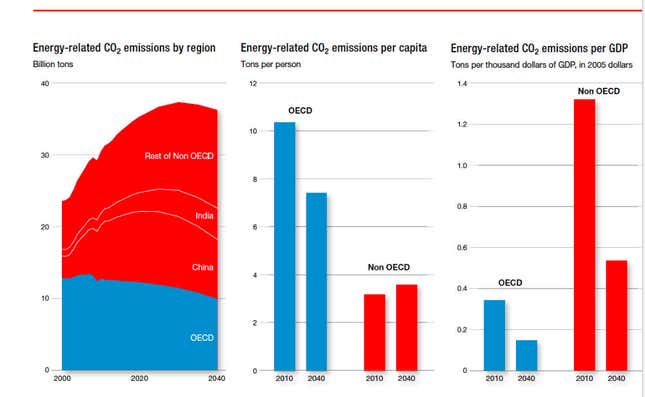Elizabeth Muller, who runs a California-based climate change monitoring group called Berkeley Earth, is urging environmentalists to help China help itself by developing its shale gas resources. Because China accounts for much of the world’s future atmospheric increase in heat-trapping gases, Muller argues that it is in everyone’s interests to help wean the country off of coal. And one of the best bets for doing that is the controversial technique of hydraulic fracturing (better known as “fracking”), says Muller.
That caught the attention of Nick Butler, a former BP executive who writes a blog at the Financial Times (paywall). Highlighting Muller’s “green” credentials, Butler wrote today:
Shale gas is not an instant solution for China. Exploration, development and the construction of the necessary infrastructure, including pipelines to bring in water and to manage its recycling, will take time. But in China and elsewhere the development of shale and the prospect of added energy security it can bring will be overwhelmingly beneficial for China and for the world as a whole.
According to a report issued last week by the International Energy Agency, the world’s current fuel diet is only slightly cleaner than it was a quarter-century ago, despite billions of dollars spent on using more solar, wind and cleaner gasoline. The measure for this conclusion is not the rise in absolute emissions of CO2, which obviously have soared, but rather the unit measure—the amount of carbon emitted per unit of consumed energy has fallen by less than 1% since 1990, the IEA says.
The main culprit? Coal, according to the IEA, the consumption of which keeps rising.

When you look at this slide from ExxonMobil’s 2040 outlook, you see that China accounts for a huge proportion of the rise in CO2 emissions (the “rest of OECD” is largely the Middle East, which is forecast to burn more and more of its cheap oil to produce electricity).

It is indisputably in the interest of the US—the possessor of the world’s most cutting-edge hydraulic fracturing technology—for China to successfully and rapidly develop its shale gas, and to turn down the coal furnaces.
But if my own experience is any measure, don’t count on much popular support for US help. I recently served on a panel of experts projecting the geopolitics of energy, and formulating recommendations for US policy guidelines. When I suggested that the US share its shale gas drilling technology with China, there was an almost audible gasp in the room. One fellow panelist finally recaptured his breath. “Um, I don’t think we should give away our technology,” he said.
Yes, we should. Muller and Butler do not go as far as I do in suggesting that US technology should be transferred free of charge. But they share the long view that shale drilling in China is in the US’s strategic interest. The perspective of technology absolutists like my fellow energy panelists—that it is never, under any circumstance, advantageous to contribute one’s engineering and scientific advances without charging for it—is the short view.
